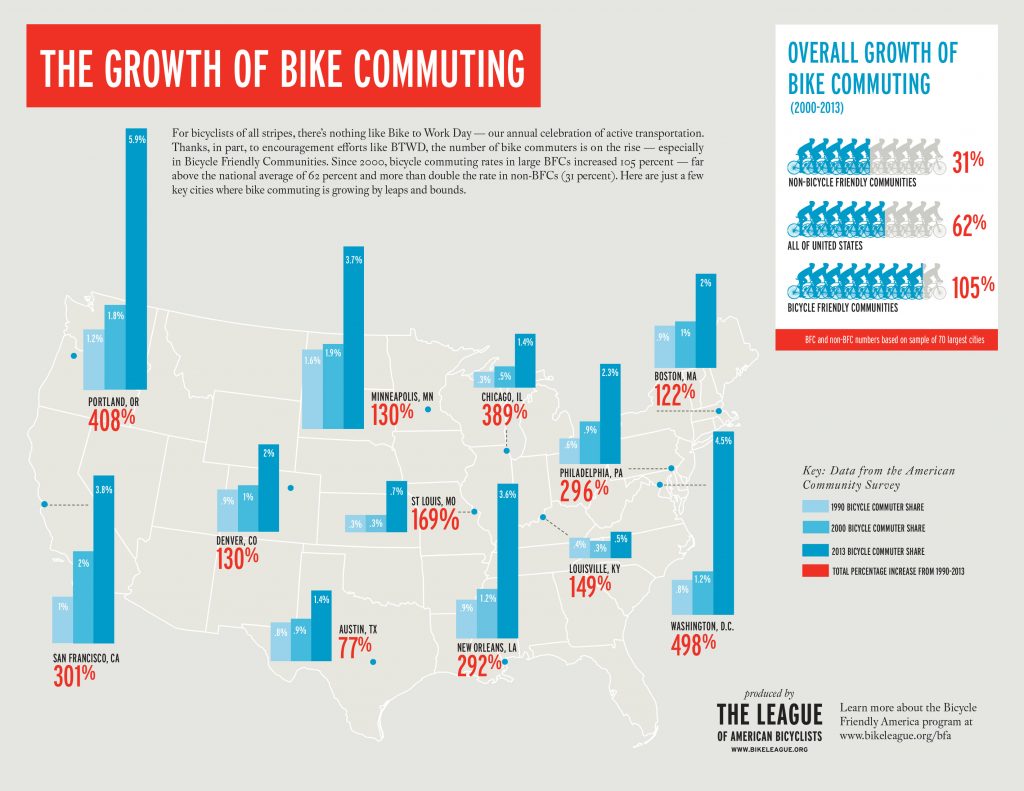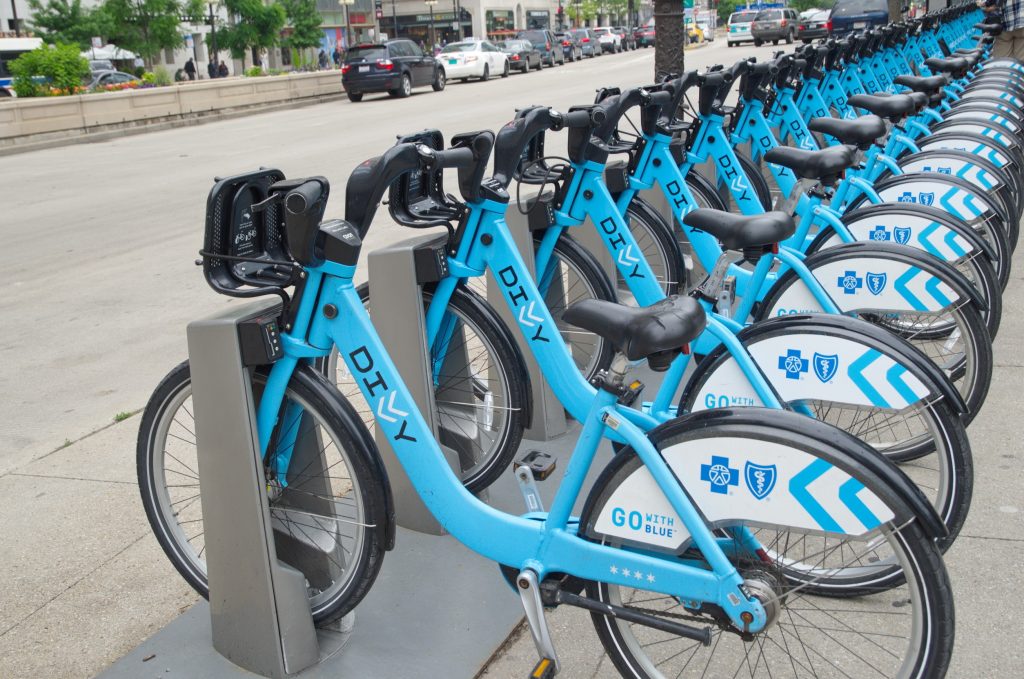Bike sharing has become a way of life for many Americans—a quintessentially Northern European trend that took hold of our hearts and wallets in recent years, and that grows each time someone moves to a city and opts for a two-wheel commute. Trendy and sustainable, bike sharing is now a major presence in every major U.S. city.
But how did we get here? Let’s look back.
The Birth
A short decade ago, around the time the global warming debate was heating up, the U.S. was lagging behind the rest of the world in terms of bike travel. Following their debut in the U.K., public bikes started cropping up in cities across the globe, but not in the U.S. The vast majority of Americans were driving or taking fuel-powered public transit to work.
Fast forward to now, a time when almost one million Americans say they rely on a bike to get to work every day (up 60 percent from the previous decade), and more than 70 American cities offer public bikes. Traveling cyclists haven’t had to worry about finding a bike abroad for years, as hundreds of cities across the pond and beyond will set you up with a rental. The same is now true about traveling within the U.S. Between citywide programs and hotel-owned loaner bicycle programs, bike sharing has become the norm.
The Rise

Most of the growth in American bike sharing happened between 2008 and 2012, but public officials were considering the change as far back as 2004. The United Kingdom began implementing public bike sharing in 1996.
Just 11 “Smart Bike” programs existed across the globe in 2004, according to a report by MetroBike President Paul Demaio, who at the time pointed to Austria, France, Germany, the Netherlands, Norway, Singapore, and the United Kingdom as the pioneers. Demaio, the Principal of the now massive North American LLC, named the pros and necessary strengths of bike sharing that he believed would be necessary to launch public bike renting here—including low cost, high demand, and a strong focus on environmental sustainability. All three proved true in the years to come.
This was good news for bike commuters who were also travelers, since it’s awfully hard to bring your bike on a trip across the United States unless you’re driving or willing to pay a pretty penny to check it at the airport. Before city bike shares, rental programs for bikes mostly existed on a tour or sports activity basis—mountain biking rentals for adventure tourism or access to a bike with a guided tour. Now, however, hundreds of thousands of commuters and tourists rely on rental bikes to get around every day.
Business Boom and Money Shortfalls

Bike shares have given birth to a plethora of startups and tech companies working to extend the rebirth of bicycles. Websites and apps like Spinlister connect people in need of a bike with shops and local individuals willing to lend a bike. Tech companies like Zagster link areas or institutions in need of bike share programs—universities, businesses, apartment complexes—with resources like equipment, sponsorships, insurance, and live ridership technology.
Like most things, bike renting became infinitely more complicated after the boom. With popularity comes a higher need for maintenance, safety standards, and money. As cities paved more bike lines and launched bike safety programs, the non-profits running the bike shares struggled to keep up with costs.
This year, the PEW Charitable Trusts found the success of bike rental programs hasn’t necessarily led to profitabilty, and the non-profits or city agencies that run such programs often require both private donations and government subsidies to survive. For example, PEW says that when it comes to Chicago’s popular public bikes, “the revenue from riders only covers about 85 percent of the costs of the program—and that’s one of the highest rates in the nation.” Even bigger cities like Washington, D.C., are able to cover less of their programs with the rates their users pay—the nation’s capital only makes 77 percent of what it needs to run the program.
The World’s Most Beautiful Bike Trails
No End in Sight
And yet, these programs are unlikely to go away—at least not soon.
Tax money and corporate sponsors are making sure they survive as the demand holds strong. Why? Because bikes make sense for the future, especially in cities that are growing upward despite scarce parking, and in low-income areas where most people don’t have cars but still need to get to work and school. Bikes are good for the country, but it seems we can’t afford them on our own.
Citigroup funded New York City’s massive bike share system with a pledge of $41 million over a five-year period. The city of Seattle recently bought its bike program for $4 million from the cash-strapped non-profit that initiated it. Birmingham, Alabama, received $1.6 million in federal grants plus $2.2 million from private entities last year to create a five-year bike program.
The business of bikes isn’t as cheap as it once seemed, but local governments and companies taking the opportunity to brand public spaces are making sure it survives.
More from SmarterTravel:
- The World’s Most Beautiful Bike Trails
- The Best Places in Europe for Every Type of Traveler
- 7 Questions to Ask Yourself Before Booking an Adventure Trip
Shannon McMahon writes about all things travel. Follow her adventures on Instagram @shanmcmahon.
We hand-pick everything we recommend and select items through testing and reviews. Some products are sent to us free of charge with no incentive to offer a favorable review. We offer our unbiased opinions and do not accept compensation to review products. All items are in stock and prices are accurate at the time of publication. If you buy something through our links, we may earn a commission.
Related
Top Fares From
Today's Top Travel Deals
Brought to you by ShermansTravel
France: 8-Night Paris, Avignon & Nice...
Infinity Worldwide Vacations
 vacation
$2880+
vacation
$2880+
Poconos: 3 Nts in Garden of...
ResortsAndLodges.com
 hotel
$305+
hotel
$305+
7-Nt Canada & New England Cruise,...
Princess Cruises
 cruise
$839+
cruise
$839+




